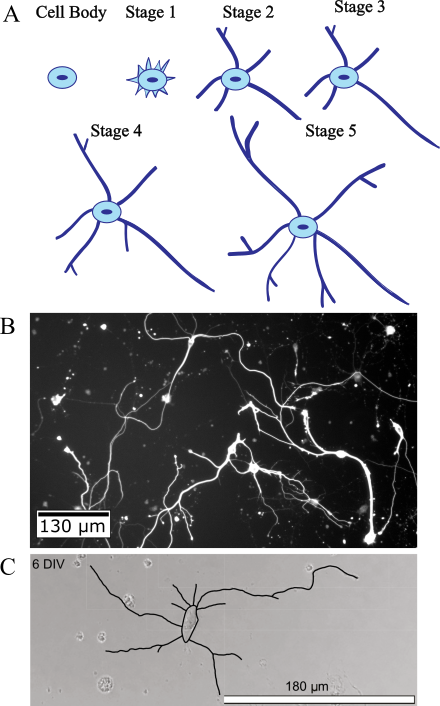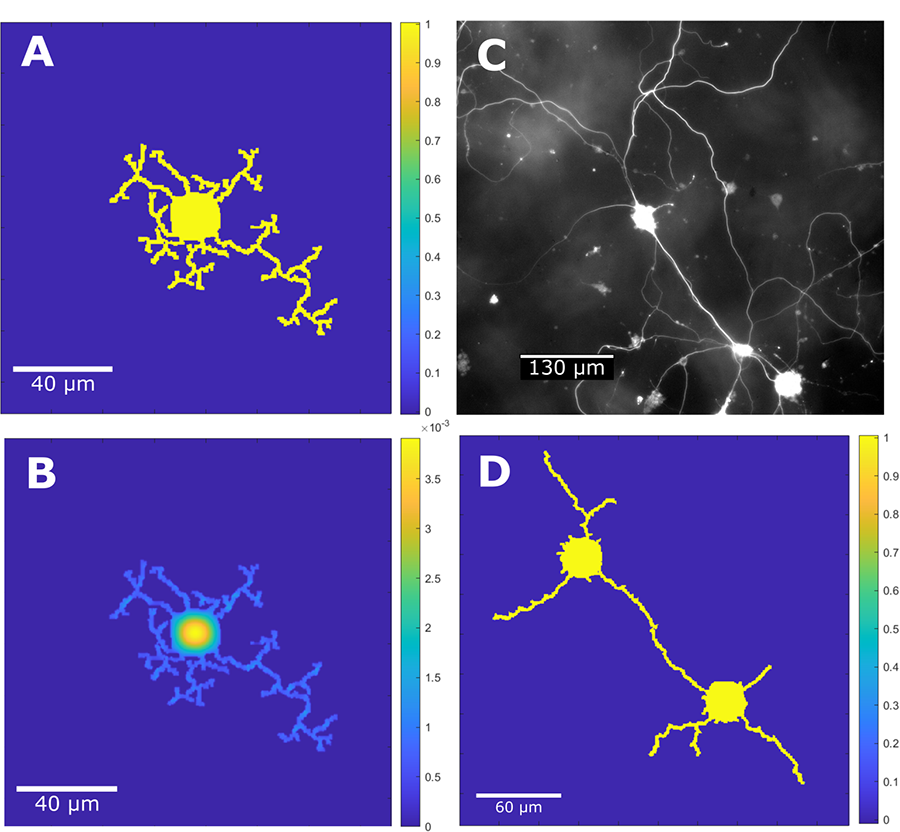Biological neural circuits critical for neurodegenerative disease therapy and biohybrid robot control
To support the development of new therapies for neurodegenerative disease and advance biohybrid robots, Jessica Zhang and Victoria Webster-Wood will lead a project to develop computational tools to predict neuron growth and transport regulation.
Biological neural circuits (BNCs) are complex networks of neurons and synapses that carry out specific actions when activated. Without them, we would have to remind ourselves to put one foot in front of the other in order to walk. BNCs have great potential in many applications like computational neuroscience, biohybrid robotics, and as a testbed for validating machine learning paradigms.
However, to further broaden BNCs’ impact, researchers need to fully understand how they grow and regulate material transport to ensure necessary materials, like mitochondria, are delivered to the right location for development and survival.
To address this challenge, Jessica Zhang and Victoria Webster-Wood will lead an NSF funded project focused on developing computational tools to support future BNCs design. The project will advance knowledge of the fundamental mechanism of neural growth, material transport regulation, circuit dynamics and the pathophysiology of neurological diseases.

(A) 5 stages of neuron growth. (B) Fluorescent image of rat hippocampal neurons. (C) Rat hippocampal neuron tracing at 6 DIV.
Zhang believes this project will provide new tools for researchers studying neurodegenerative diseases like Alzheimer’s.
“In recent years, growing evidence suggests that neurodegeneration is caused by impairment in neural circuits instead of neuronal loss. Therefore, understanding and revealing specific functions of brain neural circuits is crucial because disruptions of different neural circuits can trigger diverse defects of the brain,” she said.
An expert in biohybrid robotics, Webster-Wood is also eager to explore BNCs.

Preliminary results from our model com-pared to experiments. (A) Simulated single ne-ron growth with (B) corresponding tubulin concentration. (C) Experimental neuron growth. (D) Simulated growth driven by external cues.
“We can use BNCs to build biohybrid neural controllers to control devices,” said Webster-Wood, associate professor of mechanical engineering. “Cultured biological neurons have been used for control, either on a multi-electrode array to control a simulated animal, robot, or as neurospheres co-cultured with muscle actuators.”
The computational tools the team seeks to develop can also be used to solve a wide variety of partial differential equations that describe cellular processes other than growth and transport regulation.
Pictured, top: Material transport simulation results on a 3D neurite structure for normal transport, traffic jam induced by reduced MT, and traffic jam induced by MT swirl.
